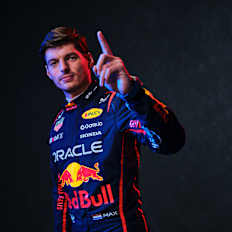F1
No doubt, an F1 garage is a massively high-pressure environment, but who feels the heat—and when?

For many fans, Formula 1 begins when the lights go out to start a grand prix. Others like to catch qualifying or a sprint, while hardcore superfans hang onto every practice lap. For the team, however, each race weekend brings many days of work and stress. Everyone has their own piece of the puzzle, and each piece is vital. Get any of them wrong and it’s lost track time in practice, a qualifying failure or the catastrophe of a DNF during the race.
It puts the crew under immense strain. Here, nine crew members at Red Bull Racing share a behind-the-scenes perspective on when and how crunch time arrives.
01
ROB REEVE: Electronics Support Group Leader
“Wednesday is the busiest day for us, because we’re getting the cars together. We’re flat-out all day, ensuring the cars are built to the correct specification, using parts with sufficient life to get through the weekend. We have races where we’re nursing issues, asking a driver to do certain things to make sure the car gets to the end of the race by changing a few settings from the wheel. Personally, I don’t like the firefighting. I think it’s nicer to have a quiet race where everything works!”
JON CALLER: Mechanic, Sergio Pérez
“You just want to build it once, build it right. There’s always pressure during the build because there aren’t many sessions, and we have to make the most of each one. Even a small mistake and you’ll be sacrificing track time. I feel like we’re working well as a team; we’re embracing this run of form and making that pressure work for us.”
MATT CALLER: Mechanic, Max Verstappen
“It used to be that Friday night was the busiest time. We would do an engine change, gearbox change, setup and fire- up—and that had us under pressure. But now, because of the curfew, that’s shifted to Saturday morning. We come in, look at the set- up changes that have come in overnight and do those; fire-up; potentially put the floor back on; scan the car; do legality checks—all of that before FP3. We’re really fighting to get the car out. It delivers a real sense of satisfaction—but delayed.”
PHILIP TURNER: Chief Mechanic, Red Bull Racing
“Friday is intense because we have the two track sessions and then a short preparation period before the covers have to go on and everyone has to leave the circuit. But the engineers can work into the evening, and so when we come in on Saturday morning, there will be new setup sheets. Now we call Saturday morning the new Friday night.”
OLE SCHACK: Front-End Mechanic, Max Verstappen
“For, me the busiest time is between sessions. Between FP1 and FP2 but absolutely between FP3 and qualifying. The system works pretty well; the engineers are in their debrief and setup changes trickle through—changes to ride height, suspension, brakes. But it’s good fun. We’re mechanics: Spannering racing cars is what we’re here to do. If it’s not busy, we’re just standing around drinking too much Red Bull!”
CHRIS GENT: Mechanic, Max Verstappen
“Saturday feels like one of our biggest pressure points. We’ll start the day setting the car up, which means the lead- up to FP3 is very busy. Then after FP3, getting the car ready for qualifying is the real pressure point. You’re working against the clock. The weather can play a part, too. If you were expecting rain and now expect it to be dry, there’s a lot to do.”
GREG REESON: Tire Technician, Max Verstappen
“It’s probably a place rather than a time for me. Brazil is high pressure because of the weather. During a race, we’re asking the race engineer which set is required next for a pit stop. That set needs to be pressure- checked at the last possible moment. When you’re in changeable conditions, we’re listening to what the driver is saying. Maybe he sees a dry line forming, and you begin edging toward a set of slicks. When you’re in a tight garage and there’s light rain falling—that’s when it’s most intense.”
HUGH BIRD: Race Engineer, Sergio Pérez
“The work begins before we get to the track with a session in the simulator to help define the starting setup for a race, so at the track we’re focused on briefing Checo about the plans for the weekend and the setup options available to us. During free practice we work through a run plan, reacting to the performance limitations based on Checo’s feedback and data analysis from the engineering team. Qualifying is the most intense period, when we can make our impact getting details right.”
JONATHAN WHEATLEY: Sporting Director, Red Bull Racing
“For me, it’s probably Sunday afternoon. Over the last few years, I’m sure at times it’s looked like Max has disappeared into the distance—but on the pit wall it’s intense: lots that can go wrong. I’ve been on the pit wall at Red Bull for 18 years and every time something goes wrong it’s a massively public event that people remember—but you learn from those. It’s all part of the adrenaline buzz of F1, but I’m quite pragmatic about it now.”













